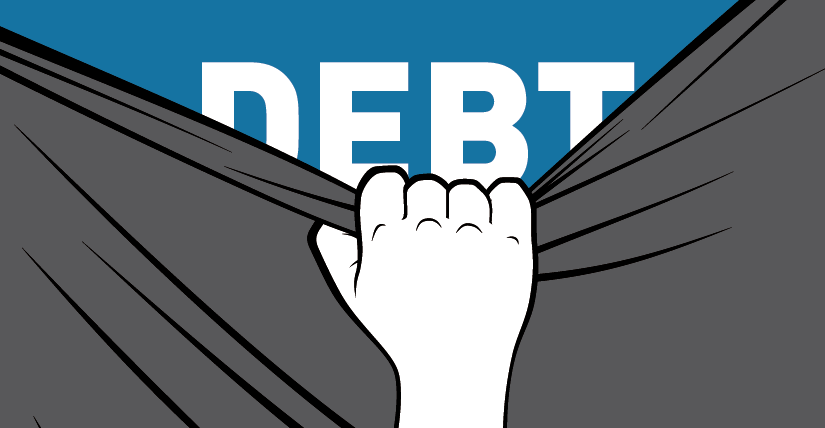Hidden Tax Debts and the Impact on the Credit Process Published July 27, 2021
As the world slowly starts to re-open after a global pandemic, small businesses are looking to secure loans so they too can continue to serve their customers. Maybe some business owners are just starting out, taking advantage of the new demands of a post-pandemic economy. Others may be existing businesses, opening their doors to the public for the first time in over a year. No matter who it is, one thing remains true: The entire credit process is at risk when unexpected or hidden tax debts are found.
Hidden debts affect the entire credit process — knowing what’s ahead will save underwriters from wasted time and headaches.
Having real-time data and insight into a business’s payroll tax deposit compliance is key to recognizing financial distress in a business. Traditionally, when businesses are tight on cash, they’ll put their IRS payroll tax deposits last on the list of priorities. They assume there will be time to catch up on those bills later when their cash flow situation improves.
Meanwhile, between the time it takes for the IRS to catch up on outstanding debts and enforce payment from the business owner, fees and penalties have accrued in the background. When it comes time to finally take care of their IRS responsibilities, business owners are hit with more fees and face an even bigger debt than they expected.
Making sure every rock is turned over is the difference between a profitable extension of credit and a risky approval.
Every lender wants the assurance that they’ll get their money back, but if the government already has a claim to a business’s property, all other lenders are relegated to the back of the line. Hidden tax debts, whether they’re personal or professional, will ultimately affect a business–they’ll have to pay at some point or deal with enforcement activities (bank accounts and A/R seizures) at the hands of the IRS.
With real-time IRS data, lenders can determine the true risk factor of lending to a business. If an unpaid tax debt is discovered, the debt may still be resolved. There might be an option for an installment plan with the IRS, or an option to settle the debt for less — if the owner can prove they are unable to pay the full amount. Once the business owner has resolved their debt, they’re in a better position to receive funding for a loan.
There are three paths to take when remedying a cash flow problem — working with Tax Guard can uncover and solve lurking tax debts.
Recognizing the symptoms of a cash flow “disease” is critical, especially when 82% of businesses fail because of cash flow issues. After identifying the tax debt issues, there are three possible paths a business can choose to take to remedy their tax debt problem: discharge of property, subordination of the lien, or a lien withdrawal.
When discharging property and the lien is removed from the business’s assets, lenders can move forward more confidently in the credit process than they could before. Sometimes, however, subordination is the smartest move — even though the lien is not removed, other creditors and lenders can take payment priority ahead of the IRS. Subordination is allowed in some cases to help pay off the tax debt faster. Withdrawing a lien removes the lien from the business owner’s record, however, the full amount must still be paid so lenders often remain stuck at the back of the payment queue. Thankfully most of the time, an installment agreement is put in place providing creditors with an established payment plan (as long as the business owner makes good on all timely payments). For more advice about how to resolve tax debt issues contact us for a free consultation.
Thankfully, the world is re-opening and businesses are looking to secure capital to better serve their new and existing customers. As a lender, due diligence is more critical than ever to ensure the health of the portfolio and that your borrowers avoid getting into debt that’s over their head. But the reality is, a public records search just won’t cut it. Hidden liabilities can burn both borrowers and lenders alike. Lenders that dig a bit deeper to uncover trends in unpaid tax debts, cash flow, and payroll deposits, can help ensure that the capital they’re lending truly makes a difference and that the small business can not only survive, but thrive in the post-pandemic world.

